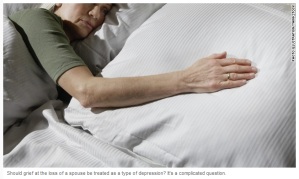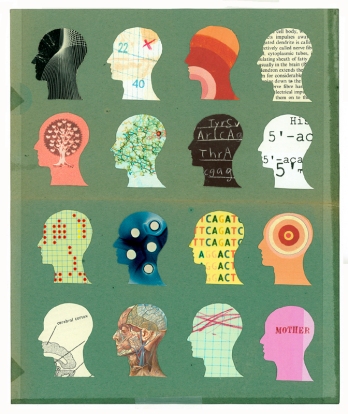This guest article from YourTango was written by Julia Flood.
 You’ve noticed that your partner seems sad, irritable, or overly critical. Maybe he has expressed hopelessness or guilt. You have noticed a loss of interest in his usual activities, concentration trouble, or changes in his sleep pattern. All these could be signs that your man is struggling with some form of depression.
You’ve noticed that your partner seems sad, irritable, or overly critical. Maybe he has expressed hopelessness or guilt. You have noticed a loss of interest in his usual activities, concentration trouble, or changes in his sleep pattern. All these could be signs that your man is struggling with some form of depression.
Depression isn’t only hard for him; mood disturbances also have a big impact on your relationship. But how do you bring up the subject? Many men have difficulty talking about their feelings in the first place. The prospect of having a mental health disorder is difficult to hear for anyone. Even gentle suggestions that the problem may lie within himself will likely not be appreciated.
As the saying goes, “People don’t care what you know until they know that you care.” So what can you do to help?
Let me start by explaining what not to do.
1. Don’t say “Look on the bright side.”
People with depression may have a long list of what is wrong with the world. You as a non-depressed person may not agree and will want to convince your partner otherwise. The goal however isn’t to fix a problem on the content level or even to change his negative feelings, but to help both of you feel less isolated. So don’t talk him out of it — this doesn’t work!
Instead, aim to be fully present and willing to listen to his strong feelings. Don’t take it personally. What he says is not so much about you, but a window into his experience. Connecting during the dark times will help heal your relationship.
2. Don’t ask “Why?” and “How come?”
While it is good to show interest in his feelings and adapt a curious, non-defensive attitude, these questions are too analytical. What you’re going for is not a rational explanation, but helping him vent the feelings that will otherwise fester.
Better questions are: “Tell me why this is important to you.” “What is the most difficult part for you?” “That really bothers you, doesn’t it?” “You sound worried, what are you afraid of in this situation?” Or simply, “Tell me more!”
3. Don’t blame each other.
Even though your partner may be nagging at you, many people suffering from mood issues secretly blame themselves. He may also worry about overwhelming you with his burden or fears you may leave him if you find out how dark his thoughts are. It might help to externalize the problem. Depression can be a “third party” in the relationship and must be acknowledged as such. If the problem is neither him or you, but “it,” you can be allies in battling this together, just like you would with any other illness.
4. Don’t hesitate to encourage professional therapy.
The timing and tone is important here. “Man, you really need therapy,” is blaming or dismissive, but if you have done the work of being present and demonstrating your willingness to listen to your partner’s feelings, education on the illness can have a tremendously normalizing effect.
According to the National Institute of Mental Health, about 16% of US Americans will get Major Depressive Disorder at some point in their lives, and there are many other types of “low-grade depression” as well. Depression is very treatable with psychotherapy and/or medication, so getting a thorough medical assessment is very important.
One last piece of advice: Don’t lose sight of your own needs in the process. Sooner or later you will need attention or assistance from your partner as well, so don’t postpone your desires and requests for him indefinitely. Make sure to take good care of your own body and mind, and surround yourself with people who can be supportive to you both.
Source: http://psychcentral.com/blog/archives/2012/06/12/4-ways-to-help-a-man-fight-depression/
Related Online Continuing Education Courses:
Related articles
- Bullying and Depression (education.com)
- Living With Depression: Allen’s Success Story (everydayhealth.com)
- Depression in Men (everydayhealth.com)








